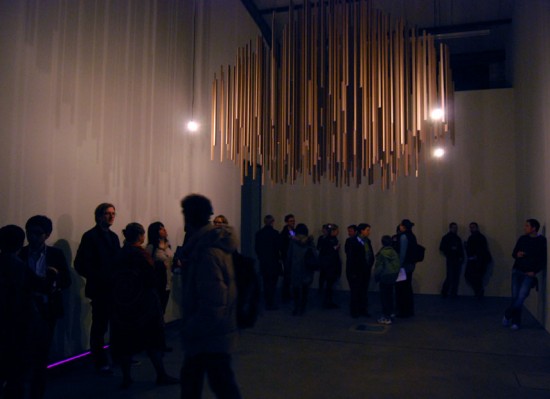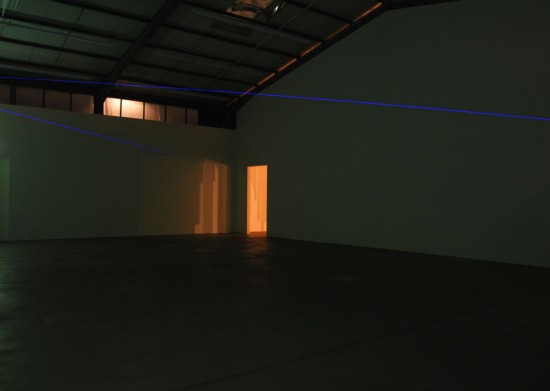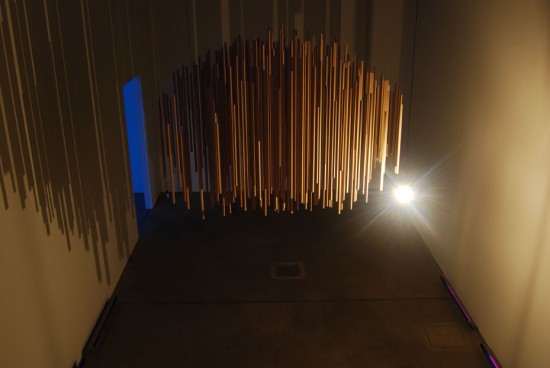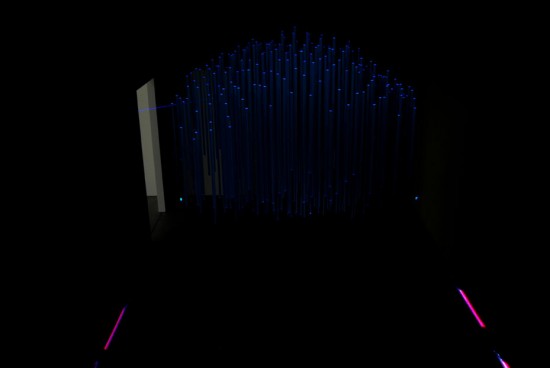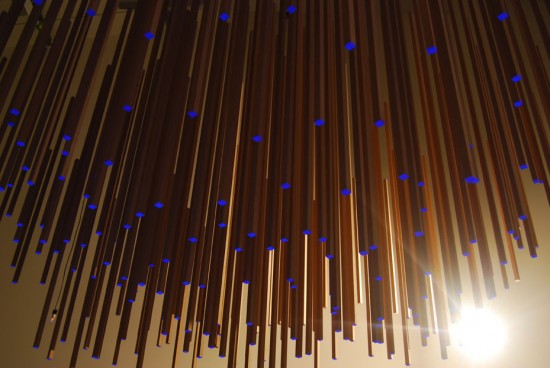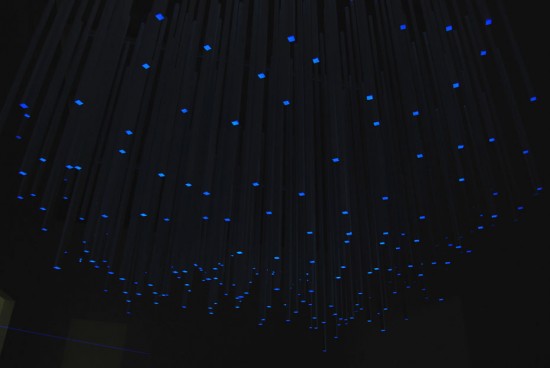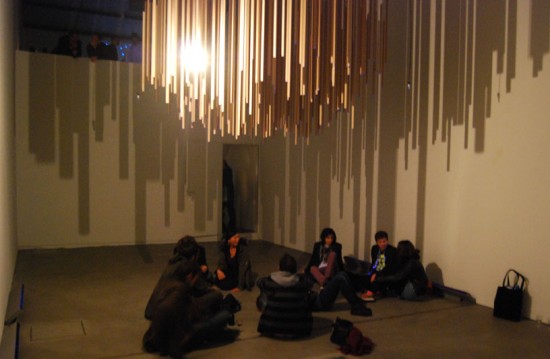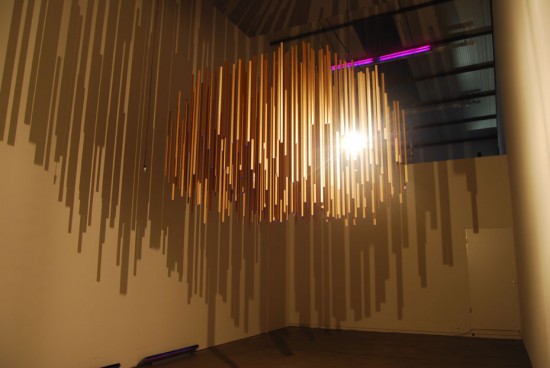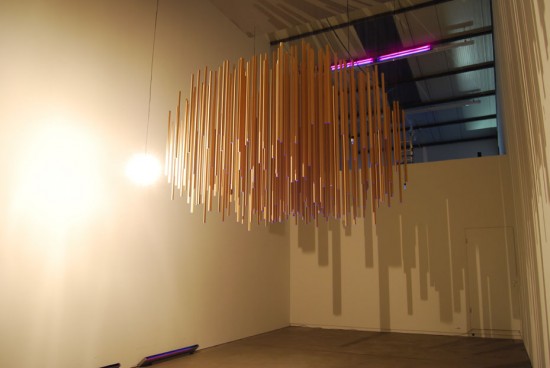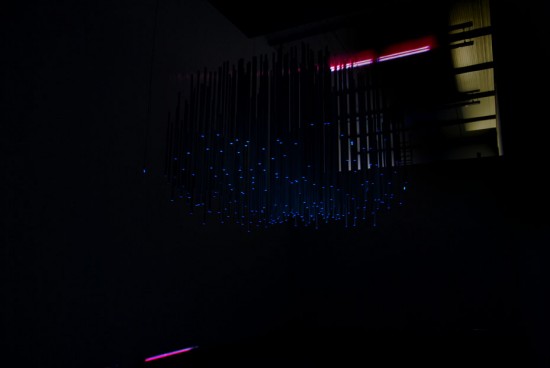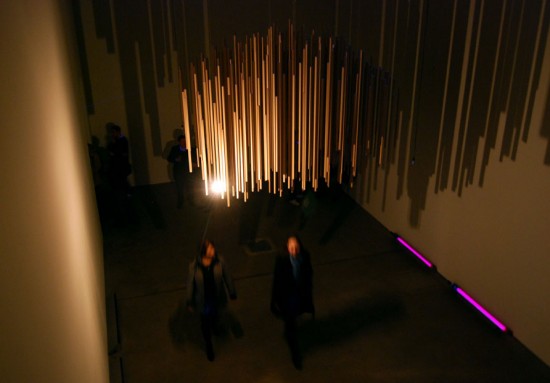2010
The Imaginary Space
“As a child, I wanted to invent a flashlight that didn’t make light in the dark,
but rather that created a beam of darkness in daylight.”
The idea of inversion, which has intrigued Lupi since his childhood, is still the origin of his work today.
Light in dark, darkness in light — the play on this dichotomy is less of a philosophical point of departure than a poetic one. Like a sculptor, Lupi creates forms out of light, which appear only after the lights, which allow us to recognize form and color, are switched off. In the security of darkness, he builds an otherworldly space where three-dimensional figures appear and move in an intermediary zone between reality and virtuality. Lupi’s installations resemble a virtual projection of figures that seem to have sprung from his fantasy yet elude any tangibility through their fragmented character. Until recently, Lupi has worked mostly with polyester threads, which he colors with meticulous precision and arranges according to a self-formulated schematic that generates an optimal density. At the center of Lupi’s work is invariably the contemplation of his sculptures as spatial installations, whether through the integration of real objects or the movement of the seemingly static. With his latest work Lichtung, Lupi dedicates himself to the investigation of space — his interest is directed towards the physical-real as well as imaginary space. More abstract than in his previous works, he examines the relationship of light and matter, and of the shadow and its origin. As with his previous works, his new installation awakens the impression of a memory, of something familiar. The idea of a clearing, light and sheltered, has its counterpart in an inversion: an overabundance of precisely arranged wooden rods alludes through their layering to the structures of trees in a forest and invokes the image of a place of vegetation and life in our minds. In Lupi’s reversal, the materiality and physical presence of the imagined replace the light space, while this space extends as a non-place around the clearing. In Lupi’s imaginary clearing, the shadows of the trees wander and project an illusory forest in the space. He produces a location between light and shadow. Through projection and through imagination, a density emerges and, in its center, the reversal of a clearing materializes. The fragile and simultaneously rigid-seeming sculpture of wood pulp, cut true to the millimeter, hovers near weightless in the air, rising overhead — the paradoxical play with oppositions and reversals becomes a physical experience as the observer passes through the space. As in his previous works, Lupi creates an “in-between”, an intermediary space, which can be identified as neither a shadow- nor light space. A cycle of differing light intensities keep the space in a constant state of change, which discards the question of a light source and designation: in a time in which light is defined not through the position of the sun, but rather through technology or arbitrariness, the actual importance and distinctiveness of light falls into oblivion. Lichtung reminds us of the passing of time through its wandering shadows and even more of the originality of light. The mystery of Lupi’s works lies in the dark: only after the end of the light cycle does his concept of the inversion become fully perceptible. The permanent black light, characteristic of his complete oeuvre, finds a new surface. The texture in space, the strong verticals, transform into a glow of illuminated particles that re-structure the space. Proximity and distance, light and shadow, verticals and single fragments — the opposites neutralize each other. What remains is an otherworldly space. The imaginary space.
– Vu Hoang
http://episkop.kunstmatrix.com/

